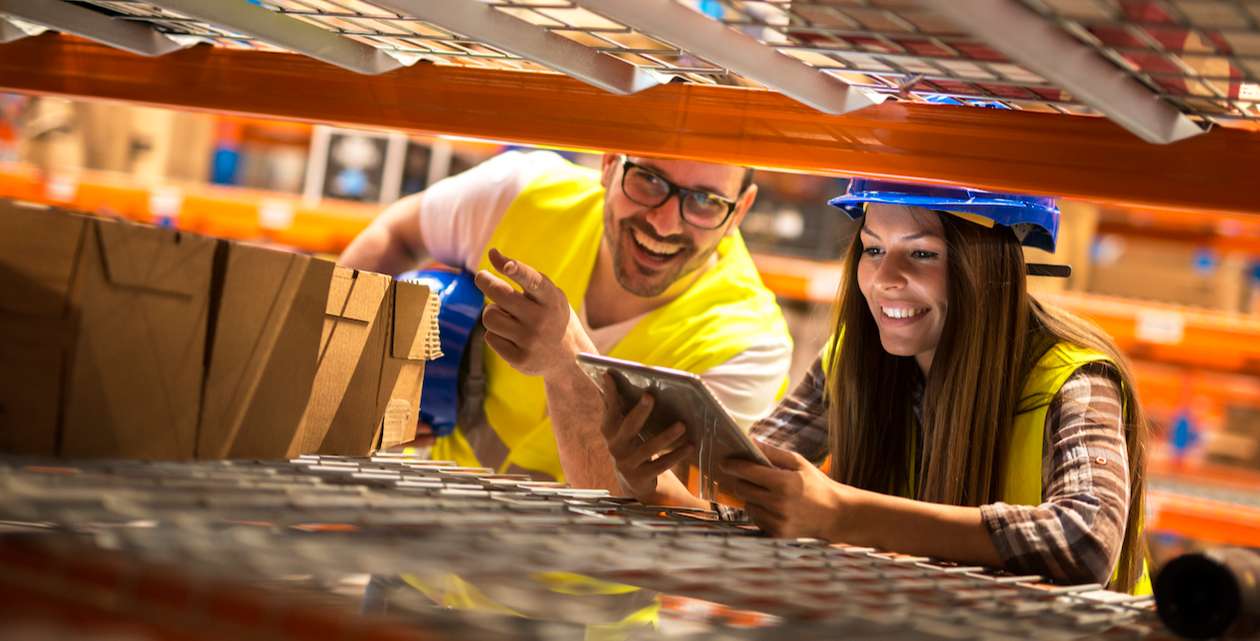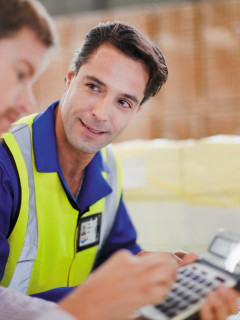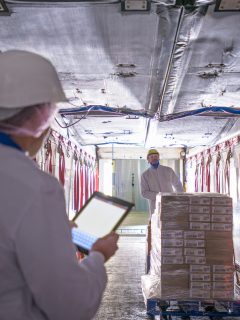En 2020, face à la Covid-19, les acteurs du retail ont plus que jamais dû faire preuve d’agilité, de résilience et d’innovation dans leurs organisations logistiques.
La fermeture temporaire des points de vente non-essentiels a poussé une bonne partie des consommateurs à se tourner vers le e-commerce (et à l’adopter durablement pour certains). L’expérience client et sa manière de l’appréhender ont ainsi muté. Les pratiques logistiques ont évolué.
Faites ici le point sur la logistique du retail aujourd’hui, ses nouveaux défis, et les clés pour vous adapter à ce “nouveau monde”.

Des adaptations sur les points de vente
Le premier changement massif de la logistique du retail, face à la crise de la Covid-19, a bien sûr été la mise en application des mesures sanitaires dans les points de vente. Après leur réouverture courant 2020, l’organisation des magasins a dû être repensée autour des gestes-barrières, avec l
- Some retailers have chosen to reorganise their warehouses according to safety distances, and for most of them this means putting tape on the floor to ensure that operators respect these distances.
- Others have chosen to set up a system of half-groups (as Noza Distribution told us) to limit contact between teams. Access to the warehouse is thus limited to a small number of operators and service providers.
- Others are thinking of setting up small order processing centres within their shops, to take over from their large warehouses. The aim is to become even more resilient, by calling on external logistics providers if necessary.
but without doubt, one of the elements that has required the most adaptation from retail logisticians is the explosion of e-commerce orders. The consequences were not long in coming in many warehouses: the rate of order preparation accelerated to meet demand
The logistics keys to continuing to adapt :
|
un passage nécessaire au multicanal
Avec la fermeture des points de vente non-essentiels en 2020, une bonne partie des acteurs du retail a décidé d’investir le web comme canal de vente. Si le passage au commerce en ligne faisait partie depuis des années de leurs bonnes résolutions, la crise a accéléré la tendance, l’a rendue nécessaire.
Les retailers ont donc massivement investi dans le e-commerce (+6% du chiffre d’affaires des ventes en ligne en 2020, selon la FEVAD), mais aussi dans les marketplaces (+8% de volume d’affaires sur ces plateformes selon l’iPM de mars 2020). Des changements de business model qui ont forcément induit des mutations de l’organisation logistique, tant en termes d’approvisionnements que de gestion des stocks.
Ainsi, selon l’étude Critizr, après la santé et la sécurité, la deuxième priorité pour 2021 des retailers est le développement des méthodes d’achat omnicanal
The logistical keys to continued adaptation :
|

A change in delivery methods
As we have seen over the last few months, the explosion of e-commerce and the health regulations in force have necessarily led to a change in the delivery methods available to customers. The retail logistics function, which until now has been used to a daily management approach centred on delivery to points of sale, has had to face up to the expectations of customers for non-contact deliveries: a real revolution in the supply chain for retailers!
- On the one hand, home delivery has had to adapt to “contactless” delivery
- On the other hand, click&collect and Drive have become part of people’s consumption habits
of course, these innovations in terms of logistics management have not limited consumers’ expectations in terms of traceability, responsiveness and simplicity of deliveries. Consumers, in retail as in other sectors, are increasingly demanding the quality of their deliveries… requiring the logistics and transport division to demonstrate innovation
|
The logistical keys to continue to adapt :
|

Reinventing the customer experience in retail logistics
2020 will have been a year of social distancing. As a result, consumers have sought human contact more than ever, not only with their loved ones, but also with the brands they buy from. The proof: 25% of French people have favoured small local shops during the crisis. And 69% of retailers have noticed a better connection between customers and in-store teams. This is why a good number of retailers have put listening to the customer back at the centre of their concerns: redesigned satisfaction surveys, listening to consumer expectations (particularly via social networks), etc. All of this has allowed them to remain agile and reinvent the retail customer experience in the age of Covid: in fact, 84% of retailers have noticed a positive impact of the crisis on customer loyalty
The logistics keys to continue to adapt:
|
in the end, it all comes down to this: taking into account customer expectations in your retail logistics strategy, in order to adapt to the new modes of consumption that the crisis has permanently established. Is your company ready to face this “new world”?















